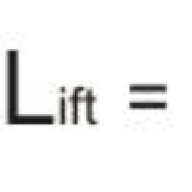Nev dont make me hit you over the head with my Trevor Thom BAK manual from 1985... P+A will ALWAYS = P
Power - not throttle position but the power your engine is capable of producing at that instant in time all things considered (including DA, age, set up etc etc etc)
plus
Attitude - the one you have set or just adjusted to
Equals
Performance - a combination of IAS and rate of climb / decent. You may need a specific one to avoid a stall or to climb out before an obstacle or to meet a touchdown point.
If you are not getting the performance you want you need to change one or both to get it... If you have no more P you need to use A to give you the best you can get.
If you want S&L and a different IAS you need a completely different P and a completely different A you cant just increase power.... as an ab initio pilot you learned "Change, Check, Hold, Adjust, Trim" or something similar when changing something but as your experience improved you "sort of do them all at the same time" but the P+A=P rule still applies. It applies in a climb, in a descent, in a turn, in a steep turn and on approach....



